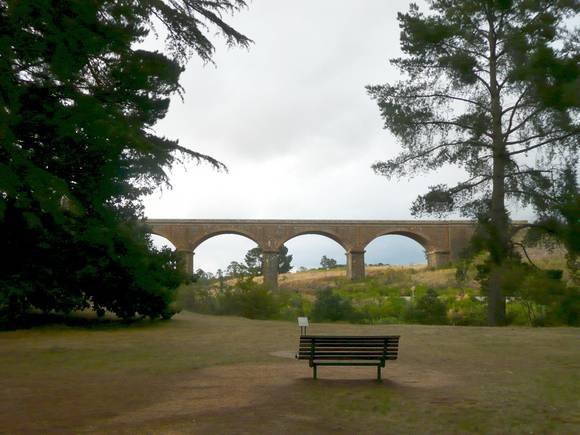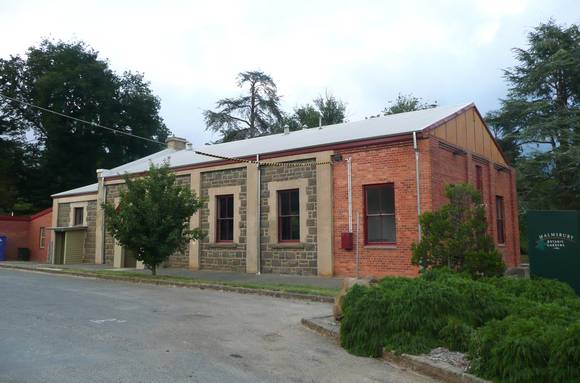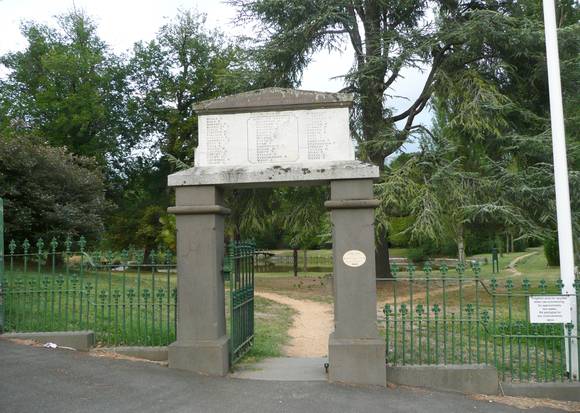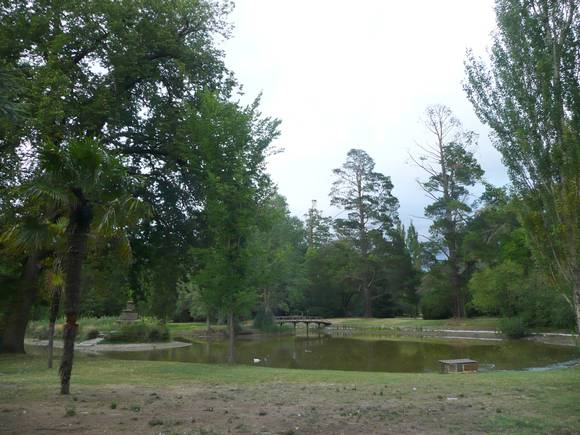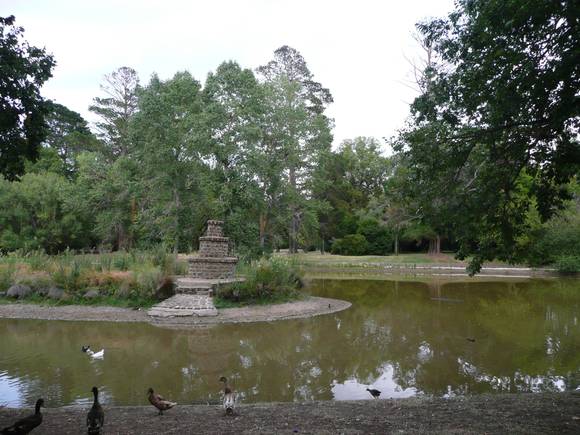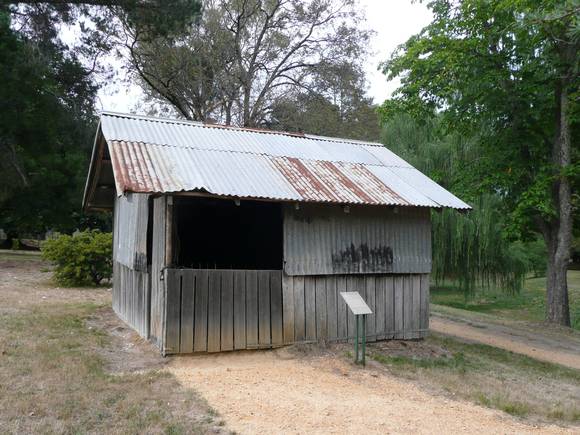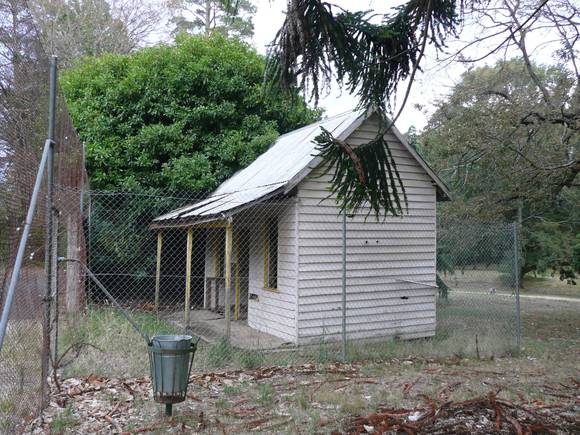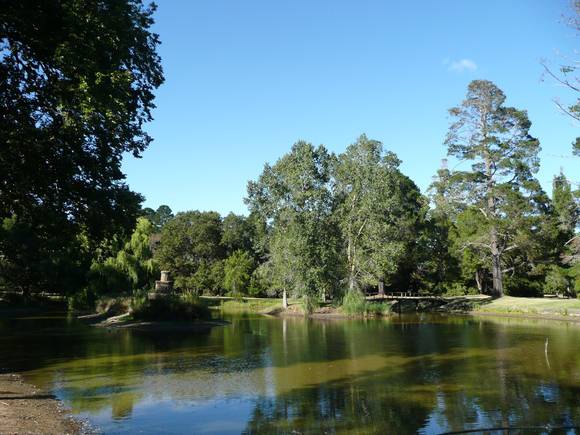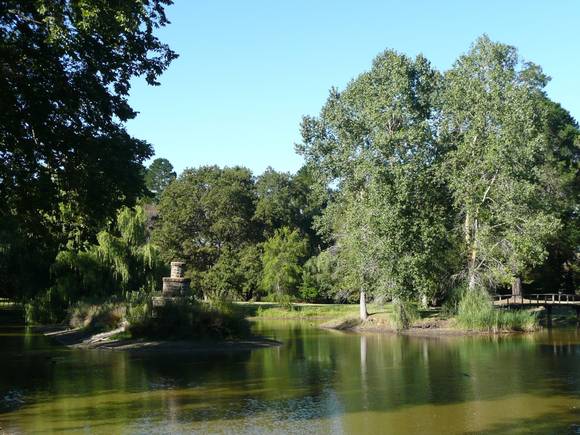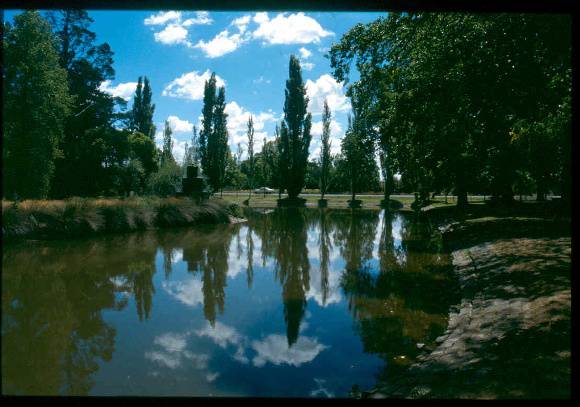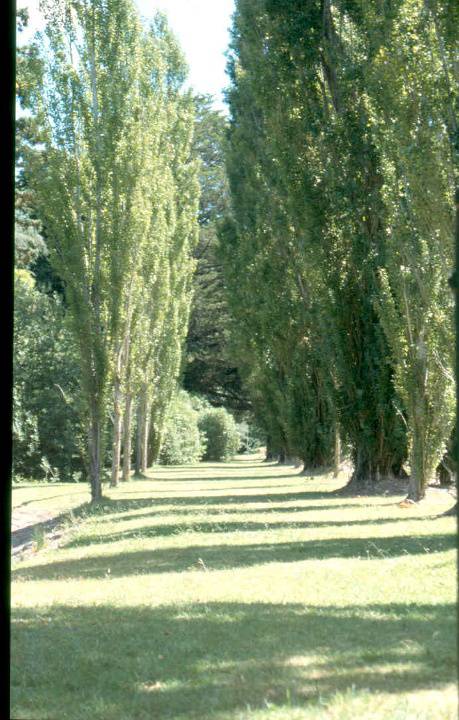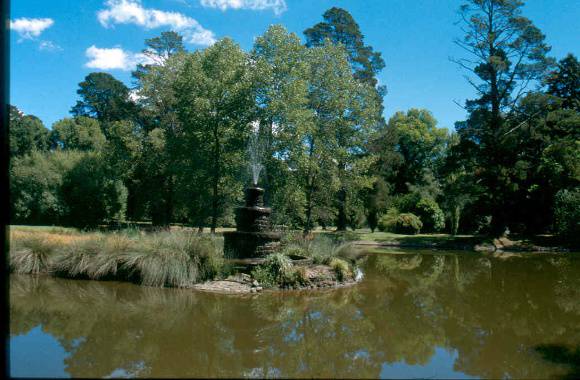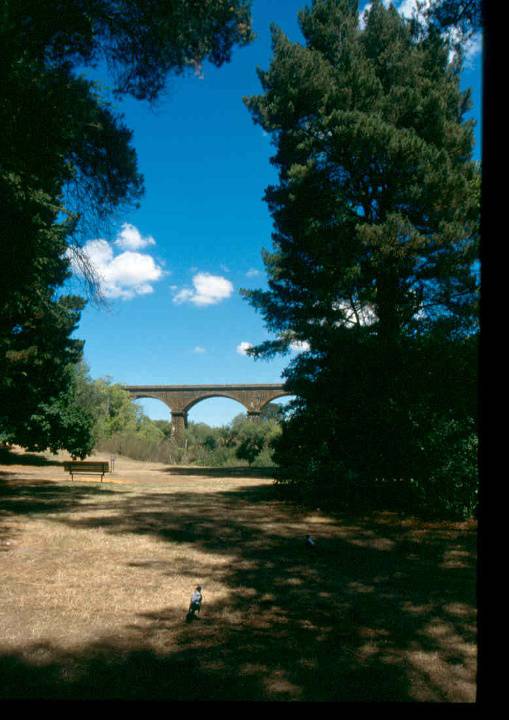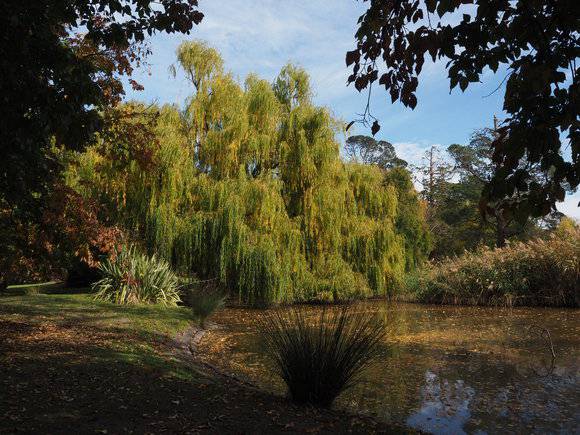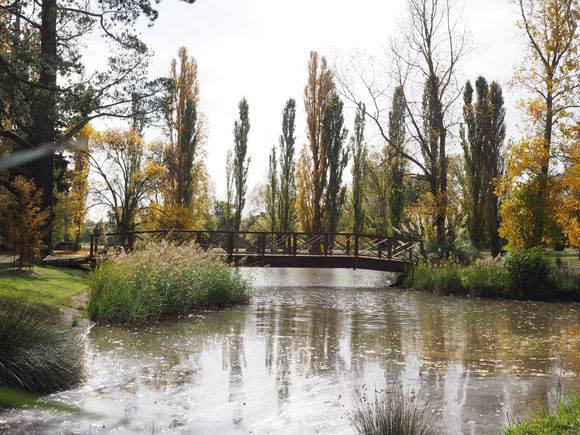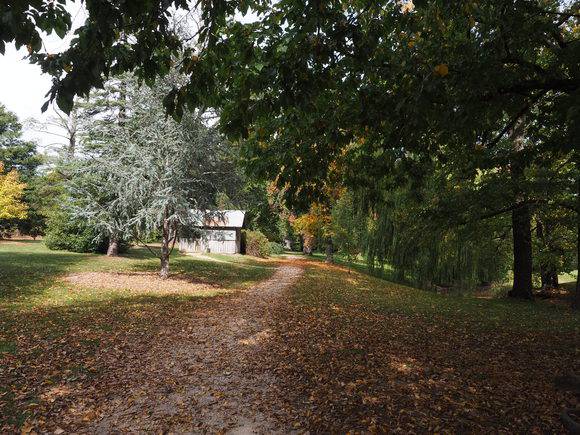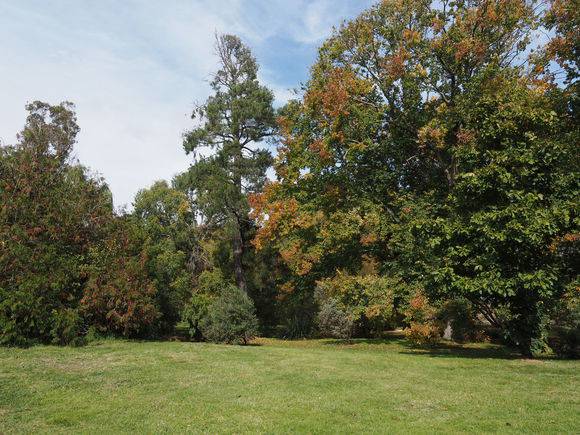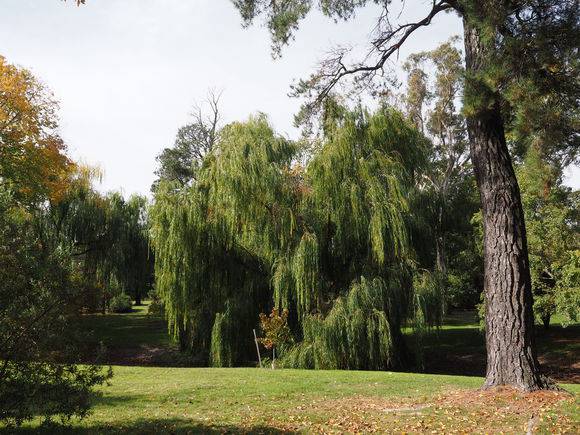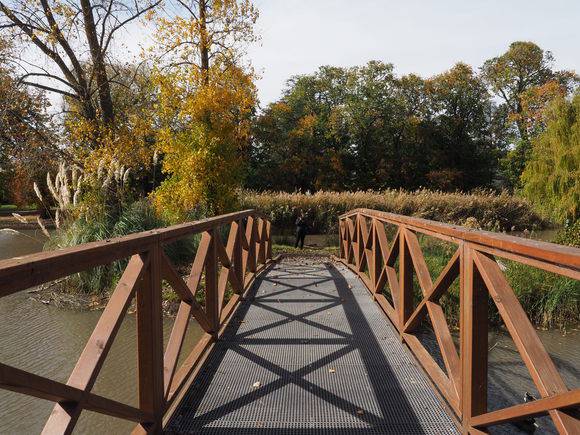| Back to search results » | Back to search page » |
|
MALMSBURY BOTANIC GARDENS AND TOWN HALL
Statement of Significance
What is significant? The land which was prone to flooding was reserved for public use in1855, and the 1857 Urquhart survey shows the area as a "Reserve for a Botanic Garden". The Gardens were first planted and permanently reserved in 1863. The initial design is attributed to Dr E Davy, a local councillor, under the influence of Dr Ferdinand von Mueller. The Malmsbury Town Hall on the edge of the Gardens is a civic building constructed in 1868 and forms a local landmark on the boundary of the Gardens. In the period 1880-1890, recreational facilities, including a bowling green, tennis court and croquet lawn, were added. How is it significant? Why is it significant? The Botanic Gardens, Malmsbury are aesthetically significant as a focus for the town of Malmsbury, for the internal and external vistas, particularly to the Railway Viaduct. The Gardens are of outstanding landscape value where natural water features have been landscaped to form lakes and islands. The mature conifers with their striking upright and dark green foliage have a dramatic landscape effect in the Gardens and broader landscape.These contrast with the evergreen and deciduous trees, especially elms, willowsand poplars in autumn.The southern edge of the Gardens are bounded by the remains of an English Hawthorn hedge planted in 1877. The Malmsbury Botanic Gardens have scientific (botanical) significance for their collection of plants, characteristic of late nineteenth century Victorian gardens, as well as some outstanding individual specimens such as Araucaria bidwillii, stand of3 large Seqoiadendron giganteum , Cedrus atlantica f. glauca, Picea smithiana, Sequoia sempervirens. The planting includes several rare plants; Crataegus coccinoides, Arbutus x andrachnoides (now regrowing from a stump) and planted in 1985, Ulmus americana, and a Eucalyptus muelleriana, planted by Hon. Joan Kirner, Minister for Conservation Forest and Lands, and later the Premier of Victoria. Since 1985 additional Arbutus species have been planted to establish an important collection of this genus, including Arbutus menziesii (pl. 1988), A. xalapensis, and A. canariensis.
The Malmsbury Botanic Gardens are bounded by the Calder Highway, Ellesmere Place and the Coliban River. The general form of the Gardens takes advantage of natural features including the topography and a billabong of the Coliban River flood plain has been transformed into a group of ornamental lakes, one with with two islands. The northern boundary, adjacent to the Calder Highway, of the Gardens is lined with an avenue of Lombardy poplars, mostly replanted planted in 1985. The Gardens contain a fine collection of mature trees including, cedars, oaks, elms, and redwoods. A Monterey pine grove is planted in the south-east corner. An English Hawthorn hedge and picket fence remnants remain along the southern and part of the eastern boundary, and once enclosed all of the Gardens. North of the pinetum is a tennis court overlooked by a simple gable roofed timber pavilion, formerly located at the northern end of the bowling green. A fish hatchery (c.1959, and no longer used) is located within a timber and corrugated iron shed south east of the lake. A war memorial gate was constructed after World War I. The gardens were extensively restored as a Victorian sesquicentenary project.
The Malmsbury Botanic Gardensare of historical, aesthetic and scientific (botanical) significance to the State of Victoria.
The Malmsbury Botanic Gardens reserved in 1855 are historically significant as a representative example of a nineteenth century regional botanic garden. The Gardens are one of Victoria's earliest botanic gardens and are associated with the post-gold rush history of Victoria, when towns which had grown as a result of the gold discoveries aspired to become major provincial cities with art galleries, botanic gardens, schools of art and design and other cultural institutions befitting their status. One of the most important vistas from the Gardens is to the 1859 bluestone railway viaduct, part of the government infrastructure based on the wealth from gold.
Group
Community Facilities
Category
Hall Town Hall


